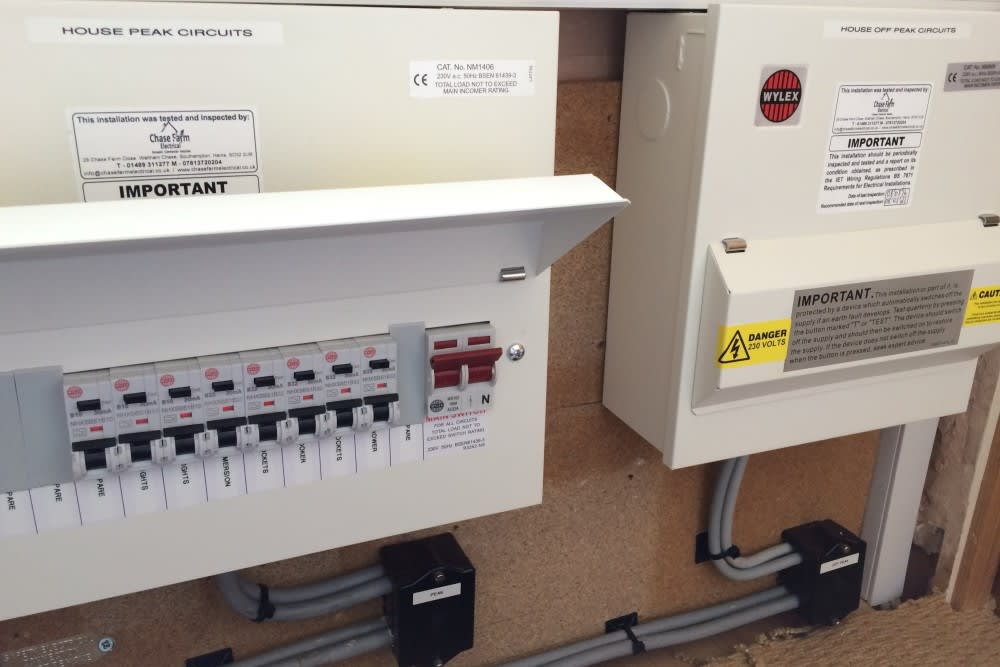
posted 10th February 2025

The Ultimate Guide to Consumer Unit Change Cost: Everything You Need to Know
Are you concerned about the safety and efficiency of your home’s electrical system?
Changing your consumer unit may be a necessary upgrade, but what does it actually cost?
This comprehensive guide will provide you with all the essential information you need to understand consumer unit change costs, helping you make an informed decision.
Why Should You Consider Changing Your Consumer Unit?
Upgrading your consumer unit is vital for several reasons that directly impact the safety and functionality of your home's electrical system:
- Safety: Older consumer units often lack modern safety features such as Residual Current Devices (RCDs) and Circuit Breakers, which are crucial for preventing electrical shocks and fire hazards.
- Efficiency: As technology advances, the electrical demand in homes increases. Modern consumer units are designed to handle higher loads, ensuring your system operates smoothly without tripping circuits.
- Property Value: An updated consumer unit can increase the resale value of your home, making it more appealing to potential buyers.
Signs That Your Consumer Unit Needs Changing
It's important to recognize the signs that indicate a need for replacing your consumer unit:
- Frequent Tripping: Regular tripping of circuit breakers can indicate that your unit is unable to handle the household demand.
- Visible Damage: Scorch marks or unusual behaviour from electrical devices can signal dangerous faults.
- Outdated Features: If your unit lacks modern safety features like RCDs, it's time for an upgrade.
- Understanding the Cost of Consumer Unit Change
The cost of changing a consumer unit can vary significantly based on several factors. On average, prices range from £300 to £800 in the UK, but can fluctuate based on:
- Unit Type and Features: Enhanced features like smart technology or additional safety measures may increase costs.
- Complexity of Installation: Outdated wiring or difficult access can add to the installation time, impacting the overall price.
- Location: Regional differences in labour costs can affect the final price.
Factors Affecting Consumer Unit Change Cost
Several factors can influence the overall cost of replacing your consumer unit:
- Installation Complexity: More complex setups require more time and expertise, increasing labour costs.
- Consumer Unit Type: High-end models with advanced technology typically cost more.
- Electrical Repairs: Necessary repairs or updates to your home's wiring can add to the total expense.
Hiring a Professional for Consumer Unit Change
For safety and compliance, it's crucial to hire a qualified electrician. Look for professionals registered with bodies like the National Inspection Council for Electrical Installation Contracting (NICEIC) or the Electrical Contractors' Association (ECA). Obtaining multiple quotes can help ensure you get the best value.
Click here for a link to the NIC EIC approved contractor list
Steps Involved in Consumer Unit Change
The process involves several key steps:
- Assessment: A thorough evaluation of your current system.
- Disconnection: Safely turning off power to replace the unit.
- Installation: Fitting the new unit and connecting all components.
- Testing: Ensuring everything is set up correctly and safely.
Safety Regulations and Certifications
All electrical installations must comply with the IET Wiring Regulations (18th Edition). Ensure your electrician provides a certificate of compliance post-installation, which is crucial for insurance and resale purposes.
Conclusion: Is Consumer Unit Change Worth the Cost?
While the initial expense can be significant, the long-term safety, efficiency, and property value benefits make it a worthwhile investment. Upgrading your consumer unit not only ensures compliance with modern safety standards but also prepares your home for future electrical demands.
FAQs About Consumer Unit Change
What is the best type of consumer unit for my home?
- The best type of consumer unit for your home depends on several factors including the size of your property, the complexity of your electrical system, and your specific safety requirements. Typically, a dual RCD (Residual Current Device) consumer unit offers a good balance of safety and convenience, as it provides protection against electrical shocks and fire hazards by detecting faults and tripping the circuit quickly. For larger homes or properties with higher electrical demands, a consumer unit with more circuits and perhaps additional features like surge protection might be more appropriate. It's also advisable to choose units that comply with the latest regulations, currently the 18th Edition of the Wiring Regulations in the UK, to ensure maximum safety and compliance.
How long does it take to install a new consumer unit?
- The time it takes to install a new consumer unit can vary based on the complexity of the installation and the condition of the existing electrical system. Generally, the replacement can take anywhere from 4 to 8 hours. If the existing wiring needs to be updated or if additional circuits are required, the process could take longer. It’s important for a thorough initial assessment to be conducted by a qualified electrician, who can provide a more accurate time estimate based on your specific circumstances. This ensures that all safety checks are performed and the new unit is fully compliant with electrical standards.
Can I install a consumer unit myself?
- Installing a consumer unit yourself is not recommended unless you are a qualified and competent electrician. Consumer unit installation involves complex electrical work that requires a thorough understanding of electrical systems, wiring regulations, and safety protocols. Incorrect installation can lead to serious risks such as electrical fires, shocks, or even fatal injuries. Additionally, DIY installations might not comply with local electrical regulations, which could affect your insurance and the legality of your home’s electrical system. It is always advisable to hire a professional electrician who is registered with a recognized body like the NICEIC (National Inspection Council for Electrical Installation Contracting) in the UK. This not only ensures a safe and compliant installation but also provides you with a certificate of compliance which is necessary for legal and insurance purposes.
Conclusion
In conclusion, upgrading your consumer unit is a critical investment in the safety, efficiency, and value of your home. Understanding the types of consumer units available, the installation process, and the factors influencing cost and safety can help you make an informed decision. Remember, while the task may seem daunting, the benefits of a new consumer unit extend far beyond simple compliance with regulations—it enhances the overall safety and functionality of your home's electrical system. If you're considering a consumer unit change, it's essential to consult with professionals. At Chase Farm Electrical, our team of certified electricians is equipped with the expertise and experience to ensure your installation is seamless and compliant with the latest standards.
Don't hesitate to contact us for a consultation or visit our website to learn more about how we can help you with your electrical needs, ensuring your home is safe and sound for years to come.





